Southampton Spitfire memorial set for £500,000 council cash
- Published
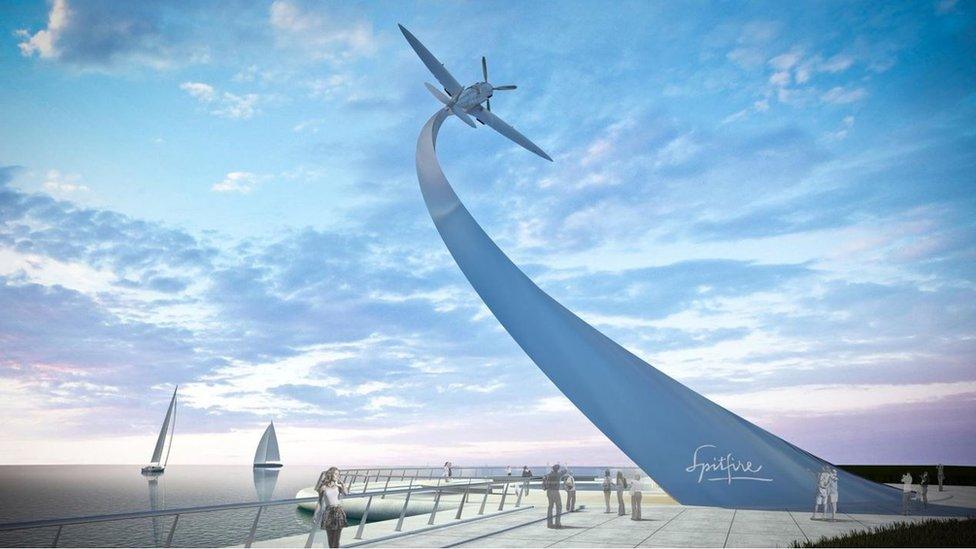
The memorial would stand on the waterfront at Mayflower Park
A project to build a Spitfire memorial in the city where it was designed and first took to the air is to be given £500,000.
Councillors have agreed to put the cash towards the 40m-high (131ft) monument planned for Southampton's waterfront Mayflower Park.
The money will be used for further design, survey and funding work.
In 2020, the government granted £3m to the scheme while an extra £3m is expected to be raised.
The monument will depict a Spitfire in flight, on top of a steel vapour trail mast.
'Crack on'
During a meeting of the full council on Wednesday, the Conservative-led authority said it would now work together with the National Spitfire Project Charity and funding partners on the project "to get it moving", according to the Local Democracy Reporting Service.
The Conservatives voted in favour of the £500,000 investment while Labour abstained.
Labour leader Satvir Kaur, who asked for reassurances about the investment, said: "We are prepared to back it if you come back with a more detailed and amended report."
Council leader Daniel Fitzhenry said: "We want to crack on with this. There's some further information required and we will be bringing this forward."
The design for the statue, chosen from a competition, was originally announced in 2010 but the scheme failed to attract funding.
The National Spitfire Project, a charity led by Southampton politicians and businesses, previously said it hoped to unveil the statue in May 2022.

The Supermarine Spitfire
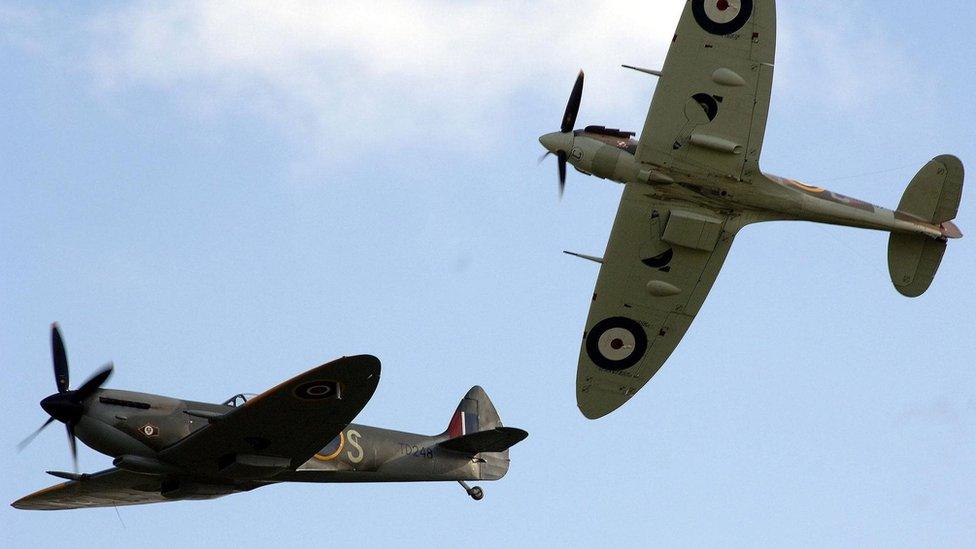
The Spitfire was designed by Reginald Mitchell at the Supermarine factory in Woolston, Southampton
The prototype was first flown from Eastleigh Aerodrome, now Southampton Airport, on 6 March 1936
After Mitchell died in 1937, his successor Joe Smith developed the fighter to make it faster and more powerful
The aircraft entered service in 1938 with the RAF, which initially ordered 310 of them from the Woolston works
The site was bombed in 1940 at a time when most Spitfire manufacturing was being switched to a more modern production line at Castle Bromwich, near Birmingham
Spitfires shot down a total of 529 enemy aircraft, for a loss of 230 of their own
Related topics
- Published10 March 2020
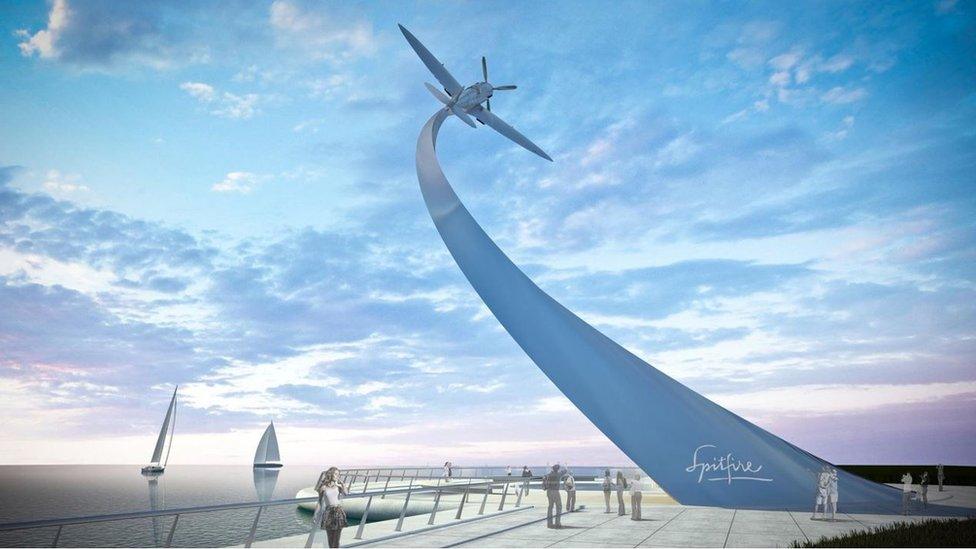
- Published28 March 2017
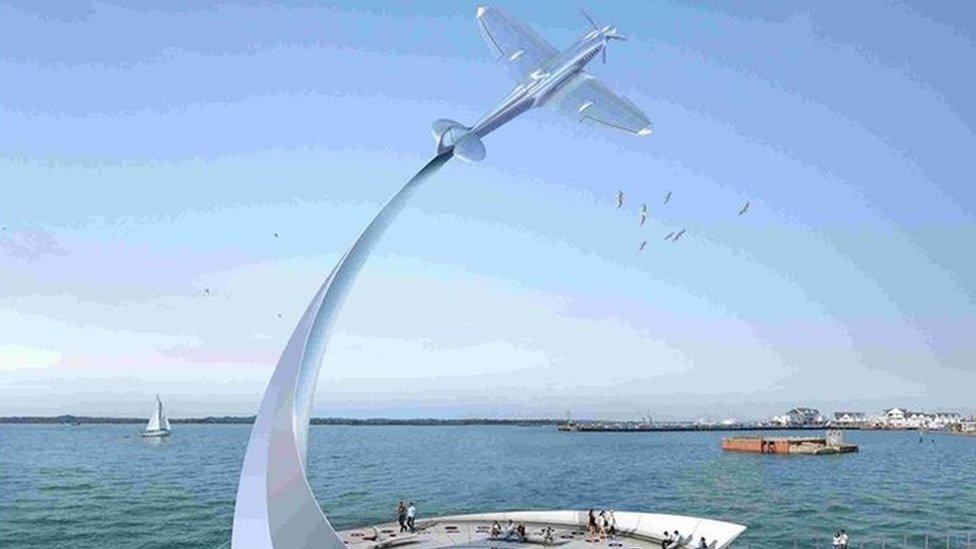
- Published26 June 2014
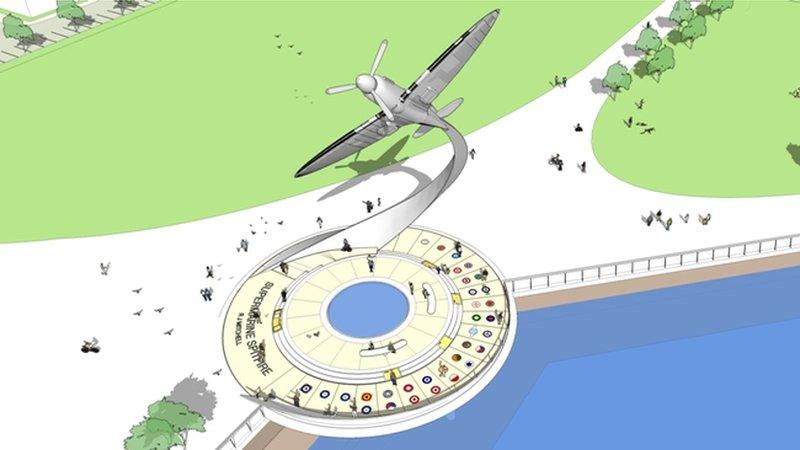
- Published7 November 2010